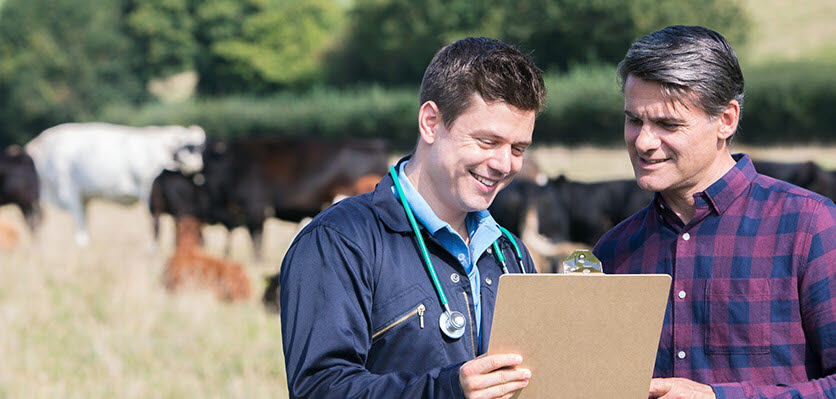Raising cattle in Australia

Cattle farming in Australia is big business. The two key divisions – dairy cattle and beef cattle – both generate a huge amount of wealth for the country. The Meat and Livestock Association (MLA) estimates that the off-farm value (domestic expenditure plus export value) of the Australian beef and cattle industry was $16.85 billion in 2016-17.
Beef cattle are reared all over Australia, although Queensland and New South Wales account for 69% of beef and veal production. Australia has approximately 3% of the world’s cattle and buffalo inventory and is the third largest beef exporter in the world. Australian live cattle exports were valued at A$1.2 billion in 2016-17, with 907,965 head exported.
In addition, according to Dairy Australia there are roughly 5800 registered dairy farms in Australia, along with 1.5 million dairy cows. Average herd size has increased from 93 cows in 1985 to an estimated 262 currently. There is also a trend emerging of more very large farm operations which consist of more than 1000 head of dairy cattle.
In contrast to the intensive nature of dairy production overseas, where cows may be housed in sheds for their entire lives, the majority of Australian dairy cattle spend at least part of the day on green pasture.
Management of cattle, even when pasture-fed, still requires expert guidance. With herd size growing and the overall number of cattle farms falling, management of cattle – both beef and dairy – has become big business.
Careful management and planning of pastures for cattle helps to maintain the quality of our beef and dairy products, as well as benefit the environment (in areas such as soil erosion and weed control), which helps ensure the longevity of our cattle industry.
For improved pastures there are a range of grazing strategies to meet different animal and pasture objectives, such as set stocking and rotational grazing. Alternatively, many graziers now use a range of grazing techniques and vary the approach according to the needs of the animals and the pastures, a practice referred to as tactical grazing.
Farmers involved in the dairy and beef industries often rely on specialist cattle veterinarians. These veterinarians are essential members of the farm advisory team, assisting producers with biosecurity planning, heard health planning including immunisation schedules, designing optimal rearing systems, advising on animal welfare needs, advising on nutritional requirements and guiding the response to disease events. On a larger scale, Veterinary care and advice is key to maintaining Australia’s international reputation for high animal health and welfare status and quality product.
To further support the industry, the Australian Veterinary Association (AVA) has a special interest group called the Australian Cattle Veterinarians (ACV). This group offers peer support and education to veterinary professionals working with cattle.
ACV members provide crucial services to agricultural producers who feed the country. They also play a key role in disease surveillance, securing our quarantine status and protecting ongoing productivity. Members also have a significant responsibility in managing and maintaining animal welfare.
